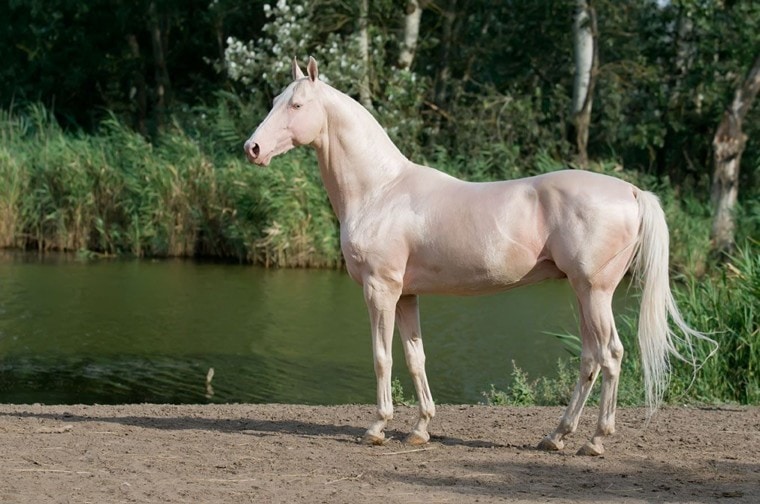
There are more than 600 horse breeds around the world, and they all have their charms and quirks.
The exotic horse breeds listed below, though, have a unique beauty or charm that sets them apart from the rest of the breeds. In some cases, it might be an unusual coloring or curly hair. It could be the rarity of a horse breed or some unique physical characteristic, and some of the most exotic horse breeds are considered exotic because they hail from distant shores and are rarely seen outside the border of their homeland.
Read on to discover 10 of the most exotic and unique horse breeds in the world.
The 10 Most Exotic Horse Breeds:
1. Akhal-Teke
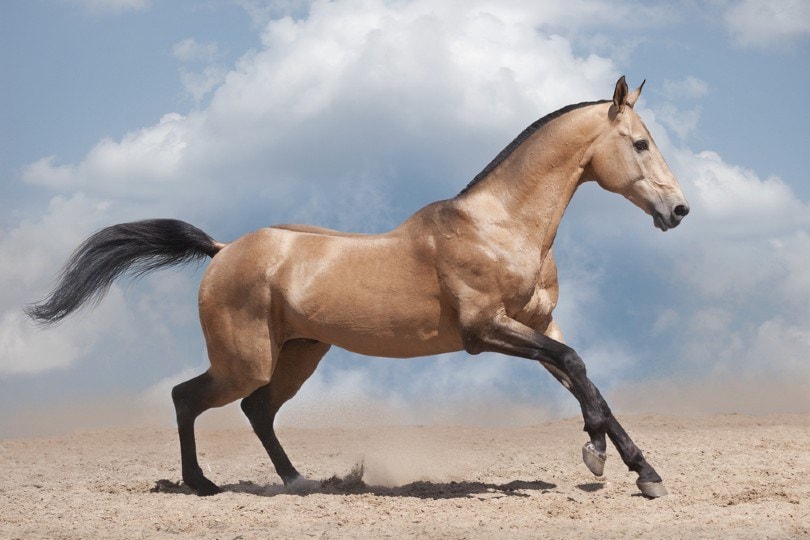
Features
The Akhal-Teke is the aforementioned horse of unique color. While there are other breeds with stunning blonde coats and breeds that mix a dark coat with contrasting manes, the Akhal-Teke has a transparent shaft to its hairs, which gives it a metallic sheen. In certain colors, the Akhal-Teke appears golden.
History
The horse comes from Turkmenistan originally, and is believed to be more than 3,000 years old, which makes it an ancient breed. Today, there are believed to be around 6,000 of the Akhal-Teke breed left.
Uses
Prized for its long-distance capabilities, the breed has performed well in dressage, show jumping, eventing, and as a racehorse. However, it is the golden glow that sees the breed top our list of exotic horses.
2. Knabstrupper
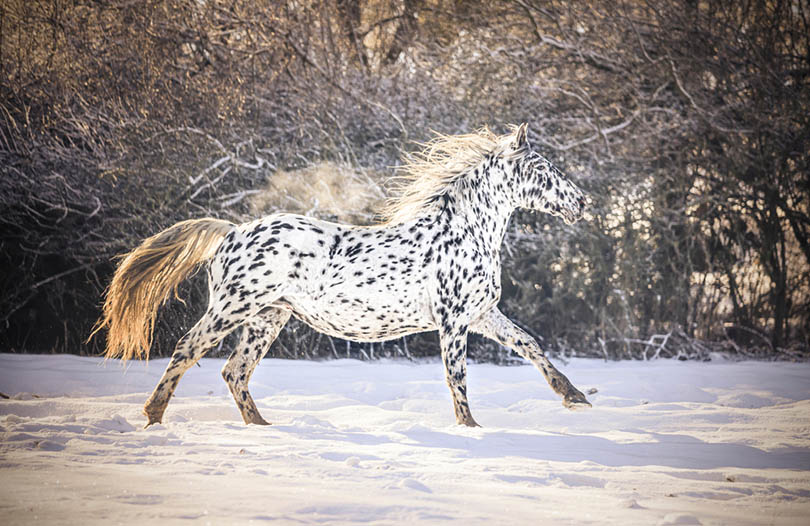
Features
The Danish Knabstrupper is another breed that is known for its looks. Like the better-known Appaloosa, the Knabstrupper has leopard markings, thanks to a complex mutation of its genes. With some of the same heritage as the Appaloosa, the Danish cousin can display the same white colorings.
History
In 1812, Major Villars Lunn purchased a chestnut blanket spotted mare, which was used as a carriage horse and was bred with a Fredericksburg stallion, producing a colt born in 1813. This colt became the forerunner for the breed, which was named after the estate on which Lunn and his horses lived.
Uses
The Knabstrupper is used for general riding, lessons, and pleasure rides. It is also known for its stamina and performs well in events like dressage, eventing, and show jumping. Its leopard coat means that it has been used as a circus horse and it was once the cavalry horse of the Danish army, but it’s obvious color made it an easy target.
3. Gypsy Vanner

Features
The Gypsy Vanner is a cob-type with feathering around the ankles and a long flowing mane and tail. It is commonly seen in Ireland and other areas of the UK, from where it originated. It can vary considerably in size, from ponies of under 14 hands, referred to as minis, classics that measure between 14 and 15 hands, and grand Vanners that are over 15 hands tall.
History
Gypsies and travelers in the UK bred a horse that had the best attributes for pulling their vans or carts. The horses not only had to be strong and capable, but they also had to be able to live close to the family, live around other animals, and had to be reasonably sized so that they would not cost too much to feed. The horse has become popular in North America as well as remaining popular in Ireland and the UK.
Uses
The Vanner has retained its original purpose for pulling carts and wagons, but its stunning looks have also seen it used for dressage as well as for pleasure riding.
4. Bashkir Curly
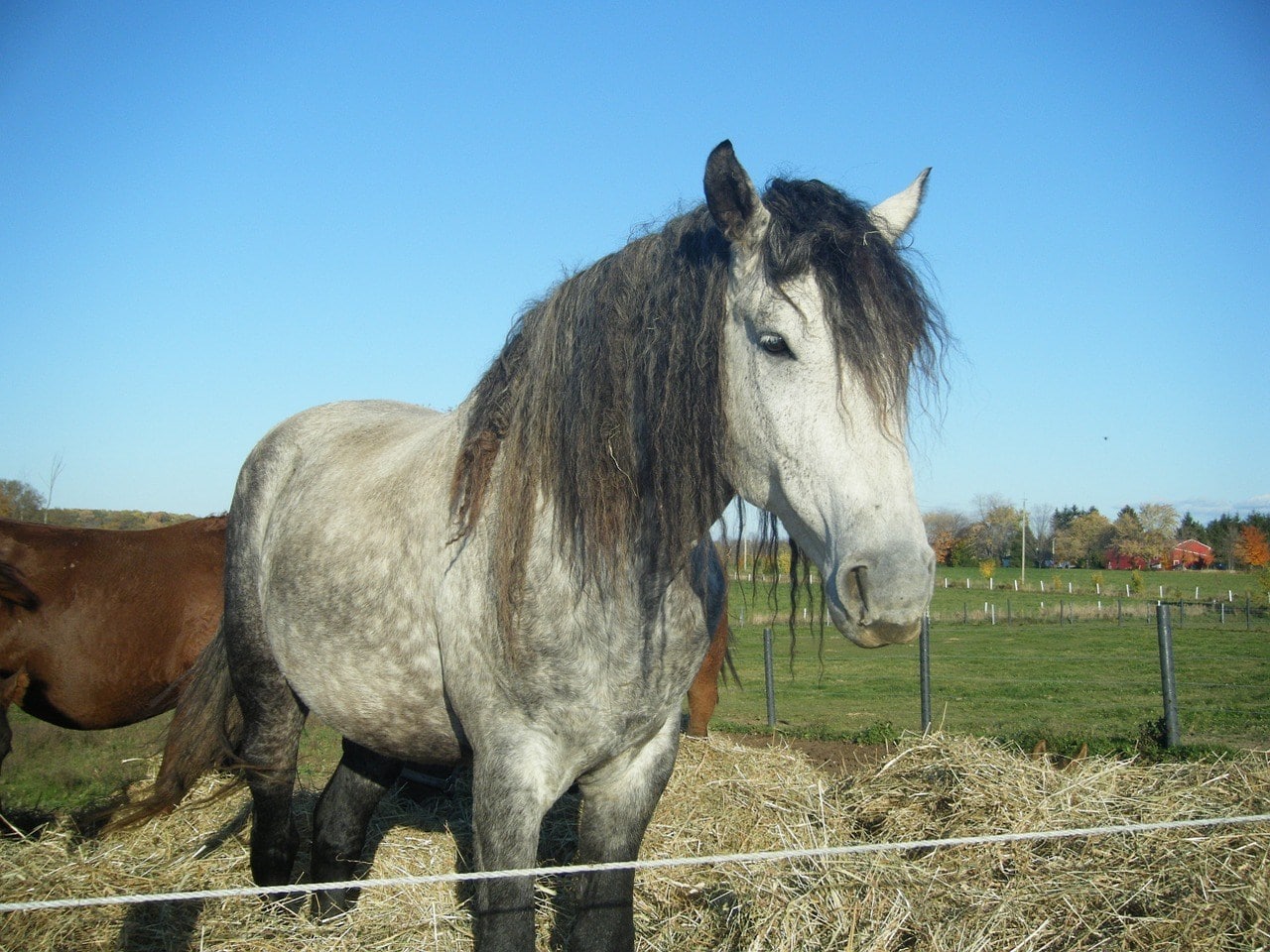
Features
The striking feature of the Bashkir Curly is, as the name alludes to, its curly hair. The curly gene can be expressed minimally, maximally, and extremely. This means that the resulting horse could just have curly hair inside its ears, as well as a kinky mane, or it could have extreme curls all over the body during winter months and be bald during summer.
History
The modern Bashkir Curly originates from the high country of Nevada when Peter Damele and his son bred the curly-haired horse after seeing and capturing three examples of the breed. They were used for ranch work and all modern Curlies can be traced back to this herd.
Uses
The Bashkir Curly breed is used for eventing, reining, barrel racing, and other styles of Western riding. It can also be seen in the dressage ring.
5. Norwegian Fjord
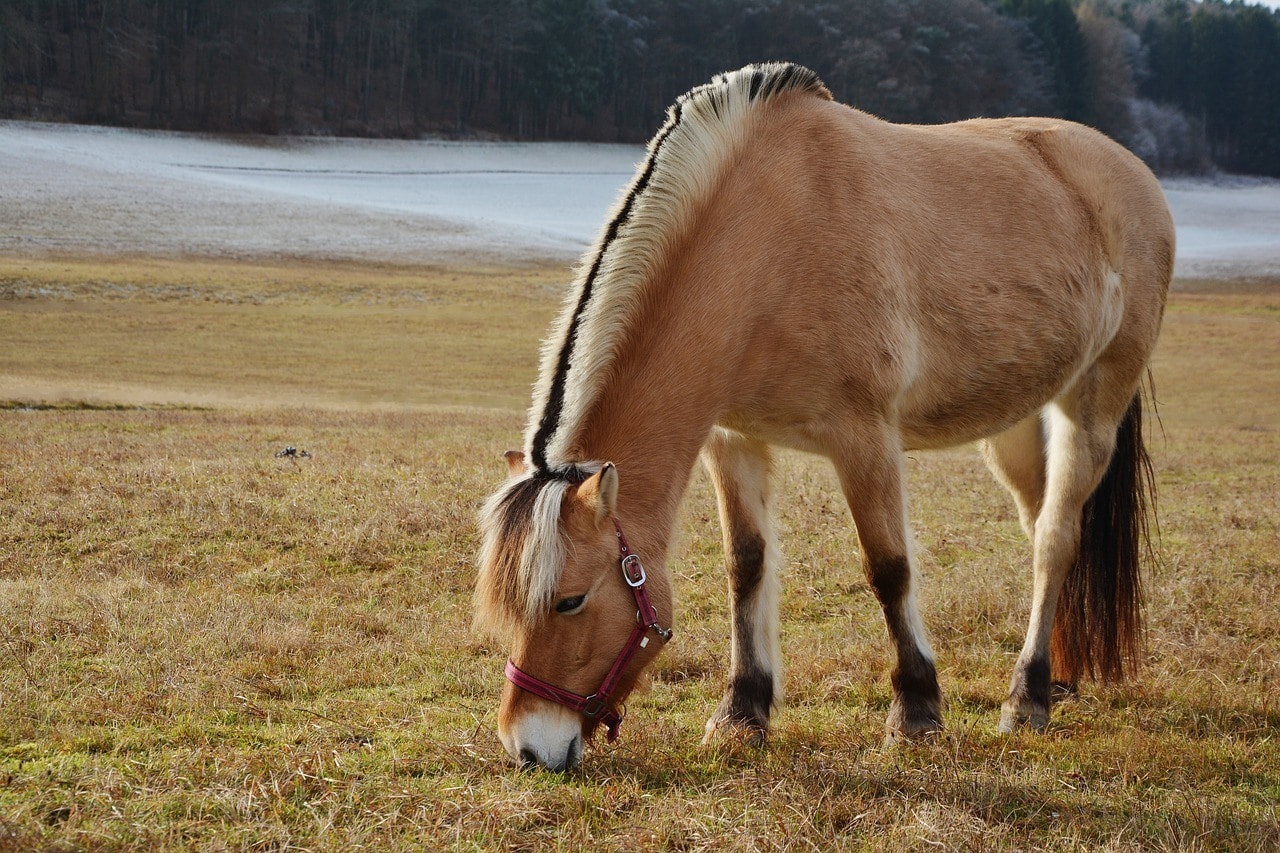
Features
The Norwegian Fjord Horse is believed to be more than 4,000 years old, making it one of the oldest breeds alive today. The breed is known for being gentle and calm, and although it has the muscular build and strength of a draft horse, it is typically smaller than this type of horse. The vast majority of this breed is brown dun, and it has a two-tone mane, usually with black center hair and white outer hair.
History
The breed looks very similar to ancient cave drawings dating back 30,000 years ago, but archaeological finds dating back to the Viking times show that they were selectively bred by the Norwegian Vikings. There are believed to be around 6,000 horses alive today.
Uses
The stocky build and incredible strength of the Norwegian Fjord Horse mean that it is still used for drafting purposes and pulling today. But it is also used for dressage and cross country jumping, as well as for transport and tourism in Norway.
6. Friesian
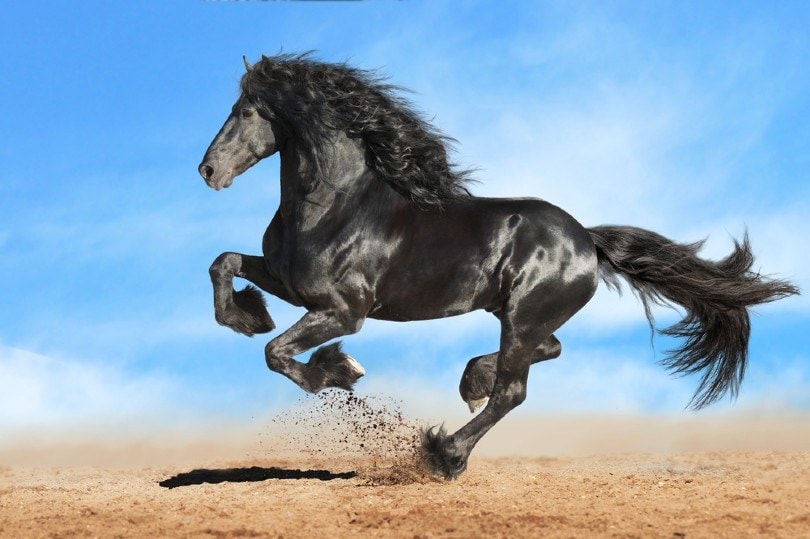
Features
Most Friesians are pure black and have no white markings whatsoever. In fact, most registries will allow some markings other than black but will refuse those horses with too much white, because they believe that it shows that the horse is not purebred enough. They are a well-known and widely recognized breed but are considered fairly rare. They are powerful looking, have muscular bodies, and they have a very long and thick mane and tail that are highly prized.
History
The Friesian originates from Friesland in the Netherlands and it is believed to have originated from the ancient Forest Horse. The Romans rode the horse and took it to England, where it influenced a host of other breeds like the Shire and Clydesdale. Unbelievably, the Friesian was once considered an ugly breed but is now thought to be one of the most beautiful of horses.
Uses
The Friesian excels in several disciplines. It is used under harness and under saddle and it is particularly successful in dressage events.
7. Andalusian
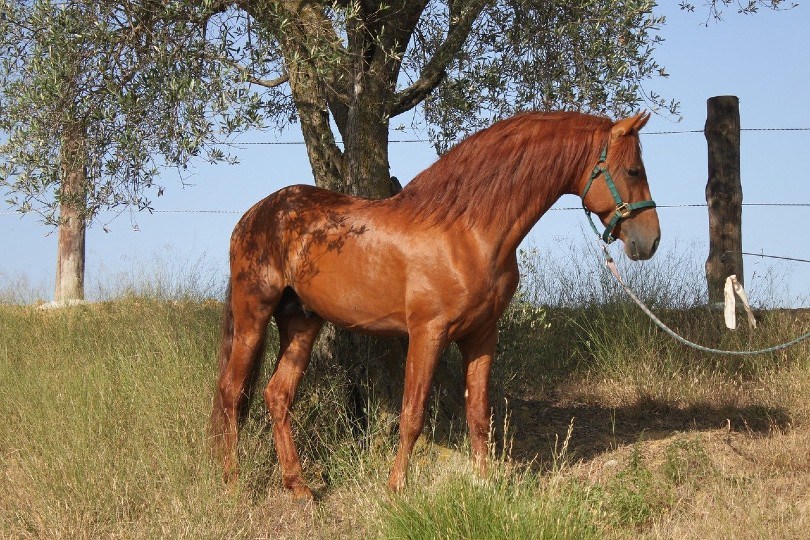
Features
This breed has thick and long manes. They have a baroque style that is perfectly in keeping with their origin. The breed has been used to influence various other breeds across the centuries, and they remain a popular breed to this day. However, the breed remains relatively rare in the US, but is favored in other parts of the world.
History
The Pure Spanish Horse, as it is also referred to, has existed since the 15th century. It was owned and loved by the nobility, used extensively as a warhorse, and it has retained the same looks throughout this time. However, exports were restricted until the 1960s and since the restrictions were lifted, it has become an increasingly popular breed around the world. There are believed to be approximately 200,000 Andalusian horses in the world.
Uses
No longer used as a warhorse, the Andalusian is still used for bullfighting and classical dressage. It is also popular for modern dressage, show jumping, driving, and general riding purposes.
8. Arabian
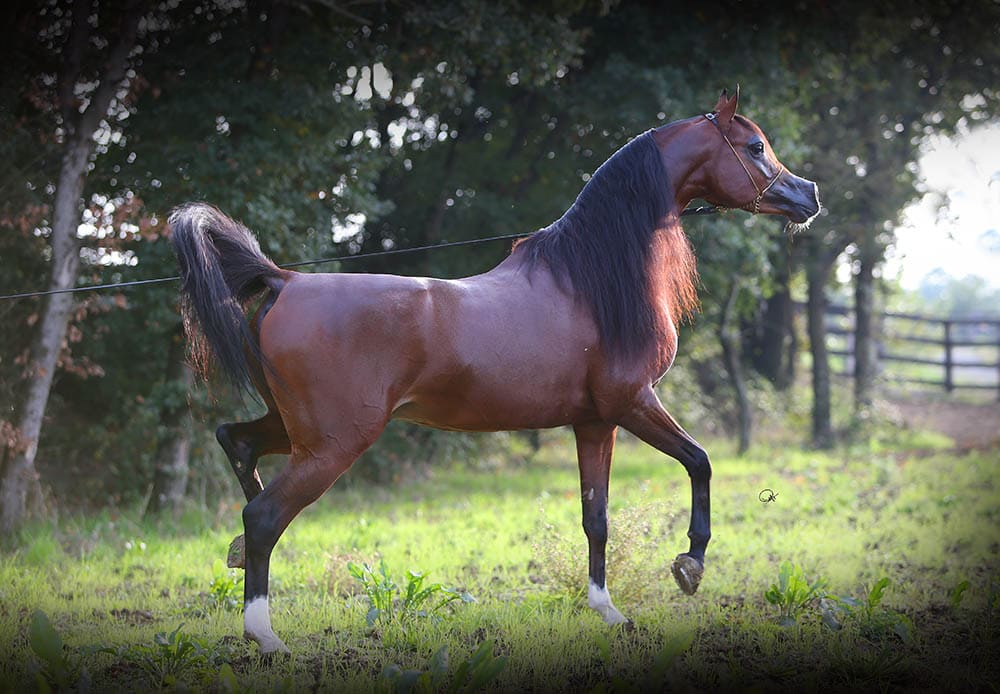
Features
The warm-blooded Arabian horse is one of the oldest breeds in the world and it has stunning and elegant physical features that make it popular. The Arabian bloodline has been used to form new breeds and to help advance existing breeds throughout the centuries, too, so you will see its physical traits in many other horses.
History
The breed dates back to 3,000 BC, which makes it one of the oldest breeds in existence. It was widely used by the Beduin tribe of the Arabian Peninsula, and it was they that advanced the early examples of this breed.
Uses
The Arabian is considered an exceptional all-rounder, but it is especially recognized for its prowess in endurance events and long-distance riding.
9. Haflinger
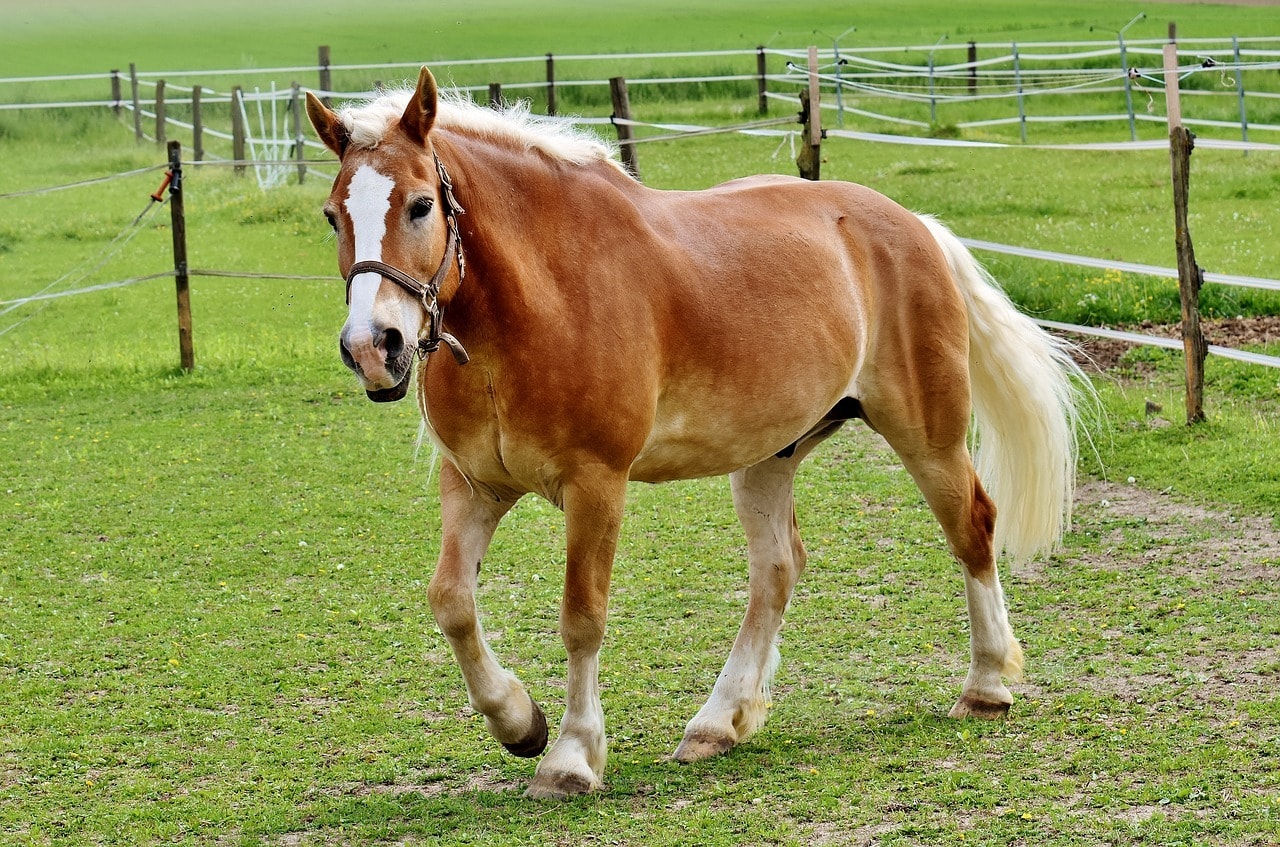
Features
Haflingers are relatively small horses but they are well-muscled and perfectly proportioned. They are hardy animals and are best known for their palomino coat and flaxen blonde mane and tail. They are known for being people-oriented and enjoy spending time with their handlers. They have a laid-back temperament.
History
The Haflinger originates from the Tyrolean mountains of Austria and was used in Medieval times to carry riders through the mountains. Their origins mean that they are still a hardy and resilient stock today, although they are relatively small horses.
Uses
Today, the breed might be used for some light drafting work, but they are most commonly used under saddle for dressage, endurance, vaulting, and therapeutic riding.
10. Lipizzaner
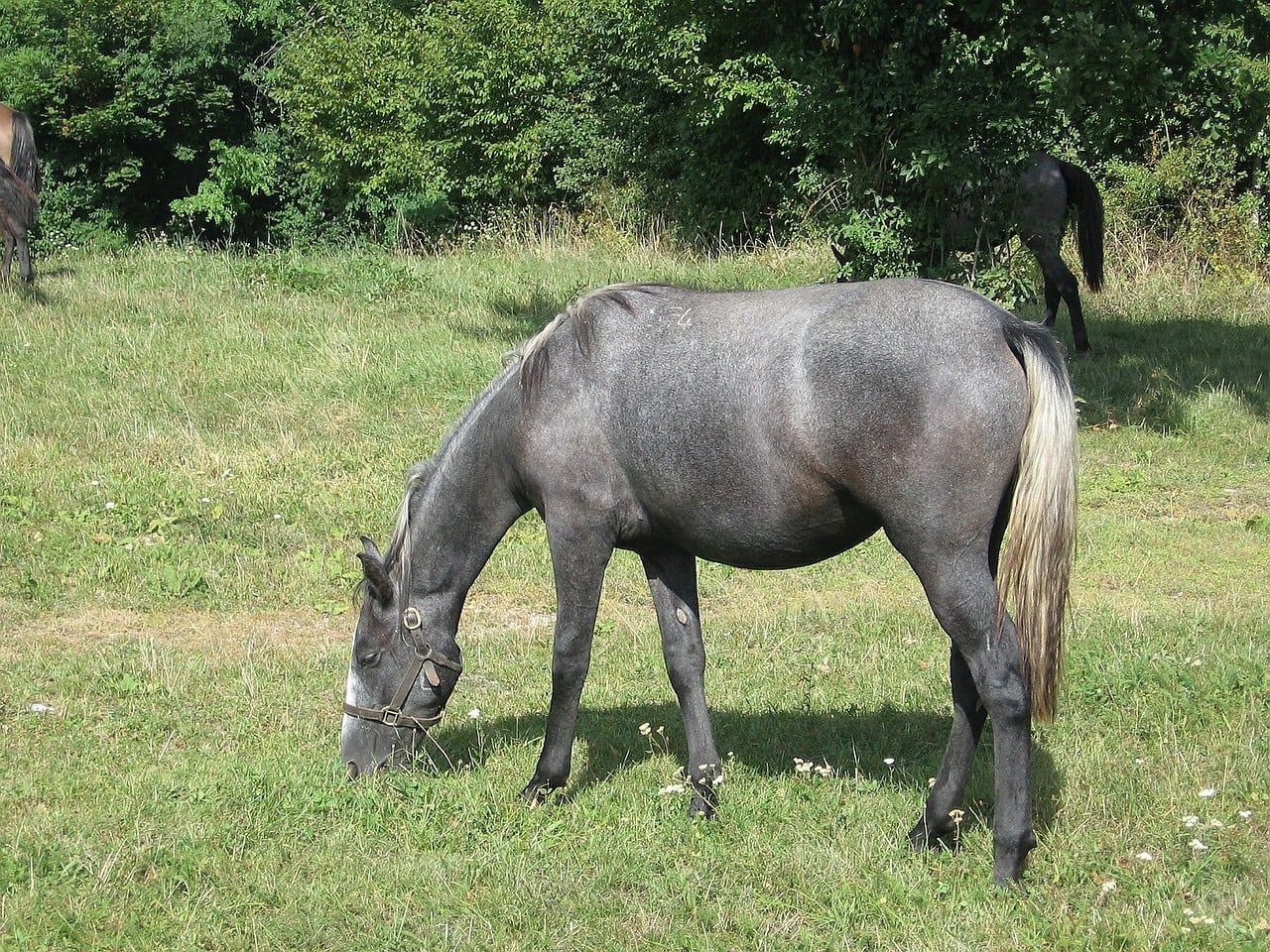
Features
The Lipizzaner is a beautiful white or gray horse, typically of average to large size. They are actually born black but mature into a light gray color. Other colors, including black, brown, and bay, do exist, but these are very rare. The breed has a long mane and tail that match the color of the coat.
History
The breed was developed by the Hapsburg monarchy and it underwent considerable selective breeding. They were used in the military as well as in riding schools, and the breed’s survival owes much to the American General George S. Patton during World War II.
Uses
Today, the Lipizzaner is used almost exclusively at the Spanish Riding School in Vienna, Austria. It excels at Airs Above the Ground, Haute Ecole dressage, and modern dressage, but the breed is also considered suitable for pleasure riding and general lessons.
Final Thoughts
There are more than 600 horse breeds in the world, but the 10 above are some of the most exotic and unusual. Despite their exotic qualities, some of the breeds make exceptional steeds and are still used today for their pulling, showing, and riding capabilities.
Related Horse Reads:
Featured Image Credit by Makarova Viktoria, Shutterstock







